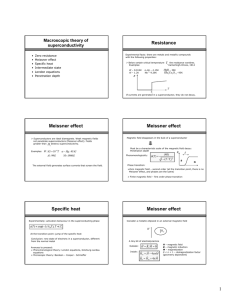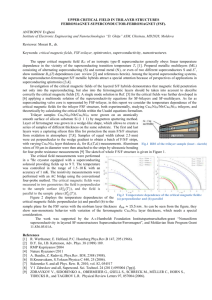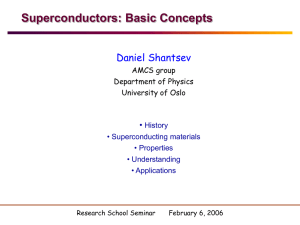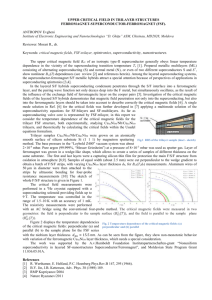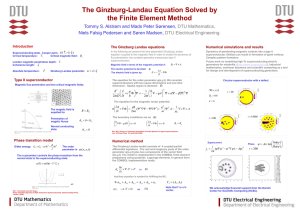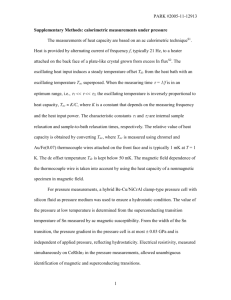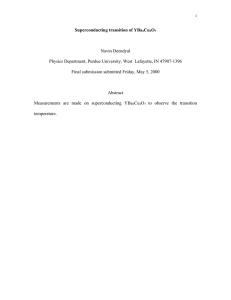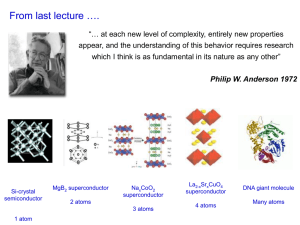Erik McGrath meissner Effect poster - Deveney-BSU
advertisement
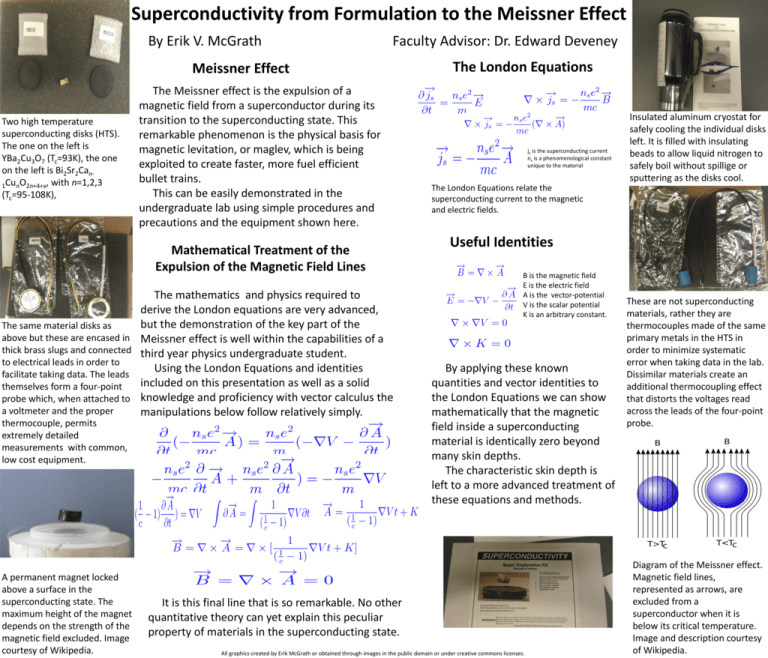
Superconductivity from Formulation to the Meissner Effect By Erik V. McGrath Faculty Advisor: Dr. Edward Deveney Meissner Effect Two high temperature superconducting disks (HTS). The one on the left is YBa2Cu3O7 (Tc=93K), the one on the left is Bi2Sr2Can1CunO2n+4+x, with n=1,2,3 (Tc=95-108K), The Meissner effect is the expulsion of a magnetic field from a superconductor during its transition to the superconducting state. This remarkable phenomenon is the physical basis for magnetic levitation, or maglev, which is being exploited to create faster, more fuel efficient bullet trains. This can be easily demonstrated in the undergraduate lab using simple procedures and precautions and the equipment shown here. Mathematical Treatment of the Expulsion of the Magnetic Field Lines The same material disks as above but these are encased in thick brass slugs and connected to electrical leads in order to facilitate taking data. The leads themselves form a four-point probe which, when attached to a voltmeter and the proper thermocouple, permits extremely detailed measurements with common, low cost equipment. A permanent magnet locked above a surface in the superconducting state. The maximum height of the magnet depends on the strength of the magnetic field excluded. Image courtesy of Wikipedia. The mathematics and physics required to derive the London equations are very advanced, but the demonstration of the key part of the Meissner effect is well within the capabilities of a third year physics undergraduate student. Using the London Equations and identities included on this presentation as well as a solid knowledge and proficiency with vector calculus the manipulations below follow relatively simply. The London Equations js is the superconducting current ns is a phenomenological constant unique to the material Insulated aluminum cryostat for safely cooling the individual disks left. It is filled with insulating beads to allow liquid nitrogen to safely boil without spillige or sputtering as the disks cool. The London Equations relate the superconducting current to the magnetic and electric fields. Useful Identities B is the magnetic field E is the electric field A is the vector-potential V is the scalar potential K is an arbitrary constant. By applying these known quantities and vector identities to the London Equations we can show mathematically that the magnetic field inside a superconducting material is identically zero beyond many skin depths. The characteristic skin depth is left to a more advanced treatment of these equations and methods. It is this final line that is so remarkable. No other quantitative theory can yet explain this peculiar property of materials in the superconducting state. All graphics created by Erik McGrath or obtained through images in the public domain or under creative commons licenses. These are not superconducting materials, rather they are thermocouples made of the same primary metals in the HTS in order to minimize systematic error when taking data in the lab. Dissimilar materials create an additional thermocoupling effect that distorts the voltages read across the leads of the four-point probe. Diagram of the Meissner effect. Magnetic field lines, represented as arrows, are excluded from a superconductor when it is below its critical temperature. Image and description courtesy of Wikipedia.


